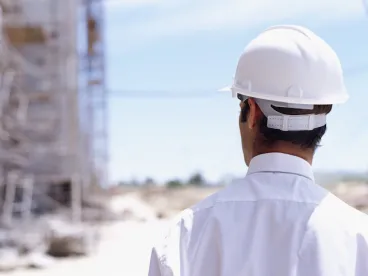COVID-19 has created chaos in the construction world. Because of stay-at-home orders, a public and workforce concerned about job-site infection risks, and an already diminished construction labor force in many markets, many projects and contractors are struggling to staff existing work and contracts. Beyond simply slowing projects, some contractors are looking to terminate contracts due to a lack of available workforce, which can throw a project schedule — and budget — into turmoil. Prudent contract partners need to know their rights with respect to contract termination and to indemnification to the extent and if termination causes damage.
As a starting point to determining rights to indemnification, review the contract’s indemnity provision. This contract language defines the indemnification obligations and rights for the parties. Most construction contracts contain an occurrence-based indemnity clause, which means coverage is triggered at the time of the injury.
As this topic suggests, parties to a contract can have ongoing rights to and obligations for indemnification even if one of the parties purports to terminate the contract. Once a contract is signed and the obligations and rights have vested under the contract, these obligations and rights do not immediately extinguish if the contract is ultimately terminated by one party.
In today’s roiling construction labor market, these risks may arise for a contractor even if the contractor terminates a contract with an owner because the contractor cannot staff a project because of workforce disruption. Similarly, there is risk for an owner or upstream contractor with a contractor prepared to move forward on a project stalled because the owner or upstream contractor cannot staff its portion of the project.
To determine liability, the parties need to under their respective right to terminate the contract, which is often permitted under the contract’s express terms. In many contracts, the parties have a right to terminate their contract with a specific type and length of notice — for example, a written notice of 30 days. A party to a contract may also terminate the contract in the event that the contract has been materially breached by the other party. Under any circumstance, it is important to comply with the form, format and timing prescribed by the contract.
Even with proper termination, the right to indemnification may still accrue for the non-terminating party. If the injury takes place prior to the termination of the contract — for example, if there was defect in the work or materials that would call for indemnity prior to the termination of the contract — then the obligation for indemnity remains. If, however, work never began prior to the termination of the contract, the obligation for indemnity would not have vested. Instead, the claim would likely be for a breach of contract. Therefore, it matters whether the termination of the contract takes place after the work has begun.
Here are a few keys to remember:
-
Indemnity typically arises where there is an indemnity clause that has vested at the time of the injury. Check the contract to determine what this clause provides.
-
Assuming that a right to indemnification is present, the next question is whether the injury occurred prior to the termination of the contract. However, the party seeking indemnification does not need to discover the injury prior to the termination of the contract unless the indemnity clause requires it.
-
If there is no right to indemnity, a party may still have a breach of contract claim. Those claims are typically highly fact-specific and require careful consideration.
What is clear is that a party needs to be nimble in responding to questions relating to the right to indemnification for construction contract termination due to workforce disruption or other COVID-19 issues. Successful construction partners need to understand what project contracts provide and decisively address changing project and contract conditions.
This article summarizes content from Bruner & O'Connor on Construction Law. For more information on this topic, or for additional citations, see § 10.7





 />i
/>i
